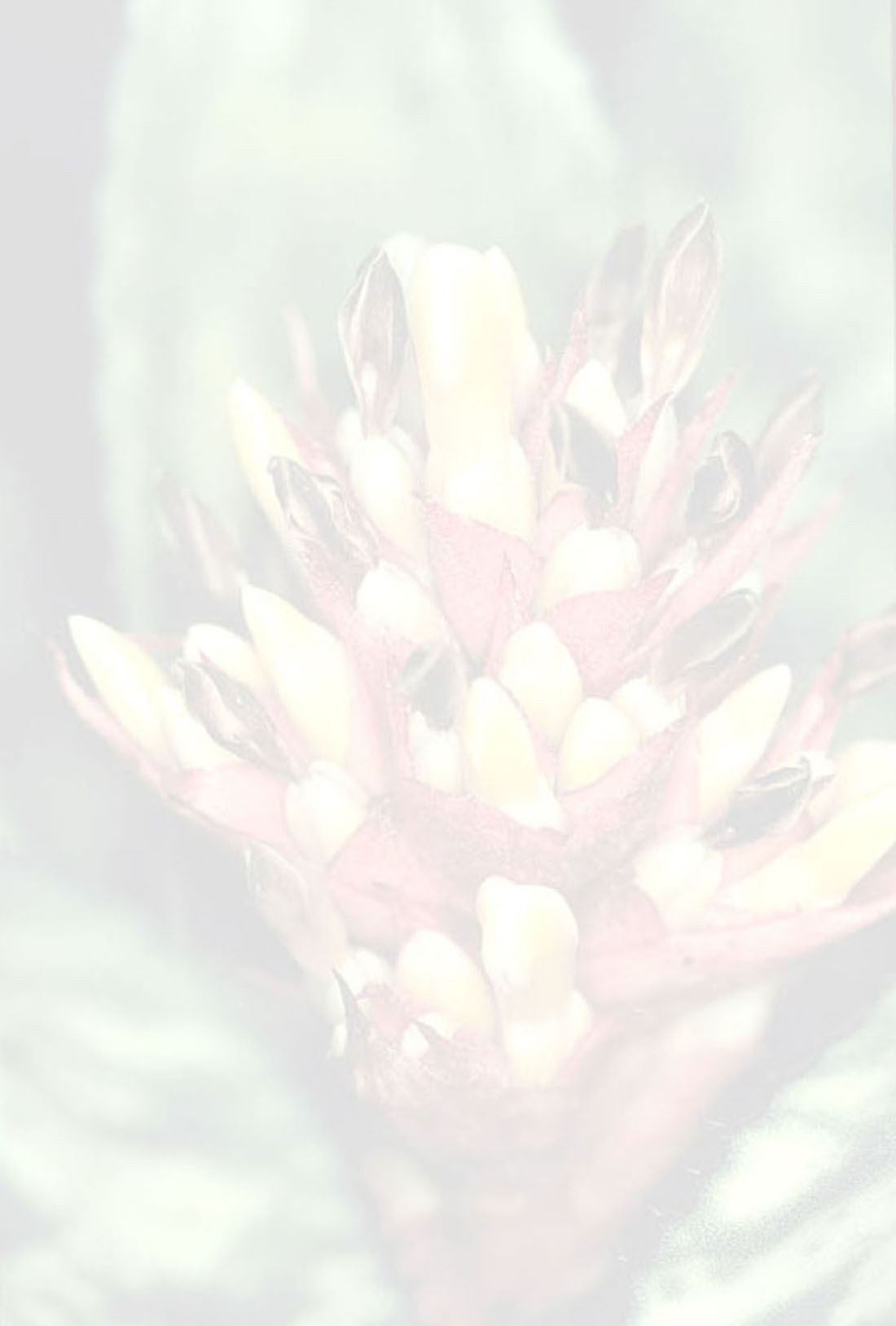Aechmea contracta (Mart. ex Schult. & Schult.f.) Baker
Literature references:
*move your mouse pointer over the page numbers to see comment
Comments:
- Even though it appears to have been in cultivation for at least 30 years, Aechmea contracta has never been illustrated in color in this journal. The recent flowering of an exceptionally attractive clone at Selby Gardens seems to be cause enough to rectify that situation, but first a little history.
Aechmea contracta was originally collected in eastern Colombia in 1820 and was described as a species of Billbergia ten years later. In 1879 it was transferred to Aechmea. Since then it has been allied with various groups within Aechmea s. l. , most recently within the subgenus Platyachmea (the A. chantinii group ), by Smith and Downs (1979). This subgenus was bumped to genus level by Smith and Kress (1990), but the latter classification has received virtually no support and, indeed, Aechmea contracta does not seem particularly related to A. chantinii but is very similar in many features, both vegetatively and florally, to a group of taxa that includes A. abbreviata, roeseliae, brevicollis and angustifolia.
Aechmea contracta has a wide distribution in northern and western Amazonia from Guyana and Venezuela to Brazil and Peru. The first living collections known to the writer were introduced by George Bergin sometime in the early 1970's from near Leticia, Colombia. At least one of his clones has attractive, spotted foliage and often produces an extremely elongate simple inflorescence. A decade or so later, a somewhat smaller and unmarked plant was collected in Peru by Carol Johnson. The most impressive collection, at least from a horticultural point of view, is one by Jose Manzanares who found this plant in eastern Sucumbios Province, Ecuador in 1997. A division of this plant was obtained by John Anderson of Corpus Christi, Texas who donated a plant to the research collection at Selby Gardens. The drawing depicts this plant. The compact, more or less upright inflorescence is unique and I encourage Senor Manzanares to give the plant a cultivar name. —See Luther 2000b p. 50(2): 79-80

